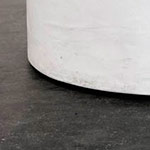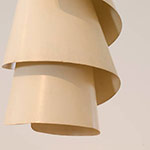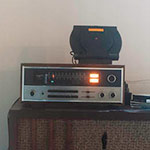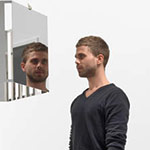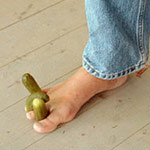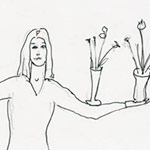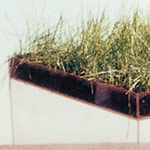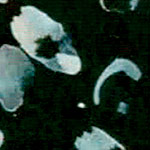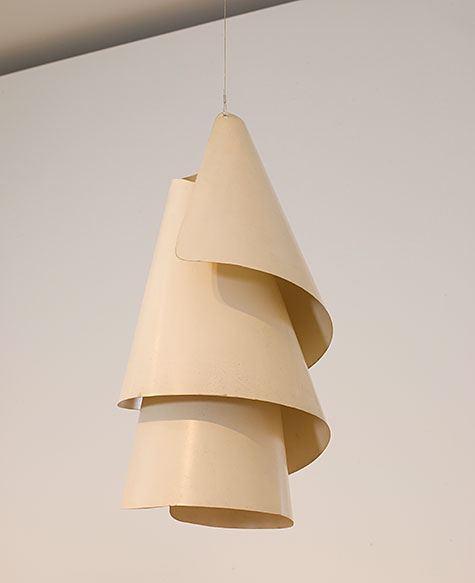
A fuse burns, a tire rolls free. It crosses rough-hewn teeter-totters, knocks over a ladder and collides with an oil drum. A lit candle, mounted on wheels, skitters down a wooden ramp and ignites a small explosion.
In “The Way Things Go” (1987), conceptual artists Peter Fischli and David Weiss play with the idea of chain reaction. The film, which runs approximately 30 minutes, choreographs everyday objects and elemental forces — fire, air, gravity and corrosive liquid — into a long, continuous series of kinetic events. The result is at once humorous and mesmerizing, ingenious and elegant — a slapstick meditation on themes of order and chaos.
This summer, the Mildred Lane Kemper Art Museum will present “The Way Things Go” in the exhibition “Moving Parts: Time and Motion in Contemporary Art.” Drawn primarily from the permanent collection, “Moving Parts” features a number of the Kemper Art Museum’s recent acquisitions as well as rarely seen works designed to heighten our perceptual experience of the world and destabilize received notions of space and time.
The exhibition opens with “Actual and Optical Movement,” a selection of works that use motion to reflect the ever-shifting nature of physical and metaphorical points of view. Man Ray’s iconic Lampshade (Spiral) (1919/1964) twists and turns with every breeze, while Robert Breer’s Float (1972) motors almost imperceptibly about the gallery. In “Equinox” (1965), painter Gene Davis syncopates hot and cool colors to create a sense of optical vibration. Conversely, in his intricate Field of Vision II (2012), sculptor Jeppe Hein uses mirrored steel to fracture one’s sense of visual expectation.
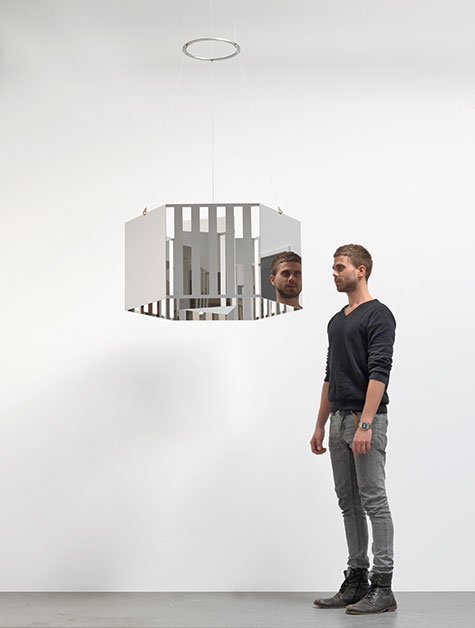
“Process and Performance,” the second section, challenges the idea of the artwork as a static, unchanging object. Hans Haacke’s Grass Cube (1967) is an acrylic plastic box topped by a small, growing lawn. Dieter Roth and Daniel Spoerri both use food, and its eventual decay, as sculptural material. In his “Subway Drawings,” William Anastasi cedes control of his pencil to the bumps and sways of mass transit while Rivane Neuenschwander, in “After the Storm (12)” (2010), recruits wind and rain to reshape the map of the state of New York.
The third and final section, “Arrested Time and Sequence,” contests the supposedly static nature of still photography. In “Exposure #106: N.Y.C., Broome & Crosby Streets, 04.17.13, 2:29 p.m.” (2013), Barbara Probst deploys a dozen cameras to capture 12 simultaneous perspectives on a single instant. Spencer Finch’s “48 Views of Loch Ness” (1997), shot in Scotland at random intervals over the course of three days, contemplates the relativity of perception — what we see versus what we think we see — through an engagement with the optical effects of light and water.
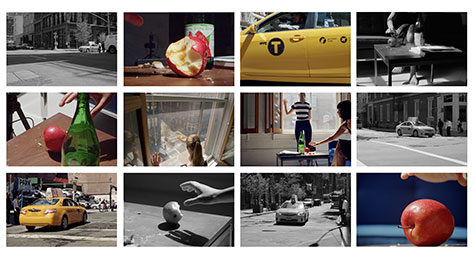
Ed Ruscha’s “Every Building on the Sunset Strip” (1966) is a 25-foot-long accordion-fold book featuring two continuous views of the Los Angeles thoroughfare. Shot in a sequential fashion, on black-and-white motion picture film, the book has been likened to “a movie in still images” and powerfully captures the sense of cruising this iconic, 1 1/2-mile-long section of Sunset Boulevard.
“Moving Parts: Time and Motion in Contemporary Art” is curated by Meredith Malone, associate curator at the Mildred Lane Kemper Art Museum. An opening reception will take place from 7 to 9 p.m. Friday, May 9. The exhibition will remain on view through Aug. 31.
Mildred Lane Kemper Art Museum
The Kemper Art Museum is located on Washington University in St. Louis’ Danforth Campus, near the intersection of Skinker and Forsyth boulevards. Regular hours are 11 a.m. to 5 p.m. daily and 11 a.m. to 8 p.m. the first Friday of the month. The museum is closed Tuesdays.
For more information, call 314-935-4523; visit kemperartmuseum.wustl.edu; or follow the museum on Facebook and Twitter.

